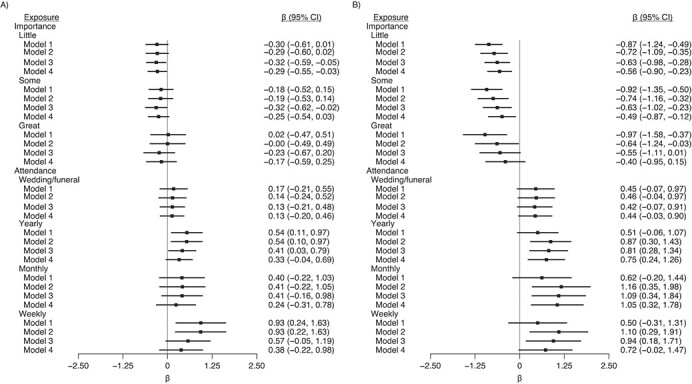Figure 4.

Associations between religiosity measures in wave 1 (2009–2011) and mental wellbeing outcomes health outcomes in wave 4 (2012–2014), Understanding Society: the UK Household Longitudinal Study, United Kingdom. A) Shortened Warwick-Edinburgh Mental Wellbeing (SWEMWBS) scores (n = 18,641); B) General Health Questionnaire (GHQ) score (n = 18,589), accounting for household fixed effects. Model 1 was adjusted only for religion variables; model 2 was additionally adjusted for age, sex, and country of birth; model 3 was additionally adjusted for outcome and clinical depression at baseline (wave 1); and model 4 was additionally adjusted for all other covariates. The reference categories were as follows: nonreligious for religious affiliation; none for importance; and never for attendance. Higher SWEMWBS and reverse-coded GHQ scores indicate more favorable wellbeing. CI, confidence interval.
